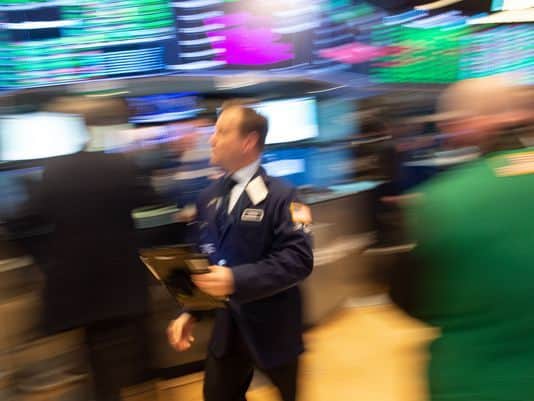
Wall Street’s newest worry — rising geopolitical tensions after President Trump warned of a U.S. strike on Syria — dragged stock prices lower Wednesday.
The Dow Jones industrial average closed down nearly 219 points, or 0.9%, at 24,189, after rising nearly 429 points the day before.
Unsettling headlines and tweets from the president continue to ratchet up the uncertainty and push the market lower.
Trump, who has been weighing a military response in Syria following an alleged chemical attack on citizens by its government, responded to Russia’s threat to shoot down any U.S. missiles aimed at Syria, tweeting: “Russia vows to shoot down any and all missiles fired at Syria. Get ready Russia, because they will be coming, nice and new and ‘smart!'”
The president’s taunting added to the list of challenges for stocks, ranging from trade tensions with China to a user privacy crisis at Facebook that has lawmakers talking about more regulation of tech companies.
Investor jitters were exacerbated Wednesday by “a series of tweets by the president escalating the potential for conflict in Syria,” Paul Hickey, co-founder of Bespoke Investment Group, told clients in a note.
The stock market has been suffering violent swings so far in April due to ongoing “headline” risk. The Dow has closed up or down by more than 200 points in seven of the eight sessions this month.
Investors also reacted to the March report on inflation. The consumer price index, which tracks prices people pay for goods like milk, clothes and gas, showed a 0.1% drop compared with February.
Any hint of rising inflation could affect the pace of interest rate hikes from the Federal Reserve. The Fed boosted rates 0.25% in March and signaled two more increases in 2018.
The nation’s central bank on Wednesday released the minutes of its March meeting, which reiterated its increased confidence in both the U.S. economic outlook and the annual rate of inflation eventually returning to its 2% target.
Oil prices rose sharply, with U.S.-produced crude rallying about 2% to nearly $67 a barrel, its highest level since late 2014.
Investors are being forced to process a lot of new information that is affecting stock prices and causing market volatility to increase, says Chris Zaccarelli, chief investment officer of Independent Advisor Alliance.
For the first time in a long time, markets are paying attention to negative headlines, he says.
“Market sentiment has turned from overly optimistic in 2017 to overly pessimistic in 2018,” says Zaccarelli. “Last year almost any bad news was shrugged off, while this year bad news turns into sell-offs and good news provides a small, short-lived bump to the markets, or is ignored entirely.”
























